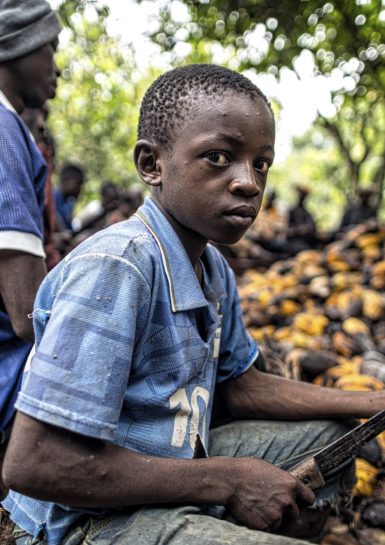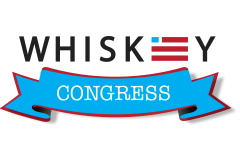
Chocolate and Child Slave Labor
Do you know where your chocolate comes from? I don’t mean what store, or which neighbor on Halloween gave out the king size chocolate bars, no, do you know where it comes from and how the main ingredient (the cocoa bean) is harvested? Chances are it comes from Western Africa or Latin America. More than half of the world’s chocolate comes from either Ghana or the Ivory Coast, both located in Africa.
Chocolate manufacturers like Hershey’s, have been reaping the benefits of the African bean for decades, and doing so by doing business with suppliers that use CHILD SLAVE LABOR. Chances are, that piece of chocolate that calms your girlfriend or mother down from a fit of rage, was harvested by a young child in Africa. A young child that should be in third or fourth grade, but instead is climbing a tree with a machete to collect cocoa beans that will be shipped around the world to be turned into a chocolate bar for other little kids to enjoy on Halloween.
While reading this story produced by Affinity is a start, there are some things you can do to help these kids eventually be released from their hell.
The first thing you can do is buy and eat chocolate from ethical chocolate manufacturers that don’t use slave labor. I’ve made it easy for you and provided you a link here ETHICAL CHOCOLATE COMPANIES.
The second thing you can do is sign petitions that aim to put an end to child labor, again, I’ve made it easy for you sign the petition here PETITION TO END CHILD SLAVERY.
The last, but not least thing you can do is spread awareness on social media. Social media is a powerful tool that has lead to movements, revolutions, and resolutions and we should leverage that power especially when innocent children are involved.
I’m not here to make you feel guilty about eating chocolate, most people do that to themselves anyway after crushing a bag of m&m’s and hopping on the scale. No I’m here to make you aware of a tragedy outside of your bubble (mine too) that we may be able to impact. We don’t have to give up chocolate, but it may be worth it to find someone who can make it using fair wages, adults, and not leaving children scarred and maimed for life.
Chocolate comes from the cocoa bean, which is primarily found in Latin America and Western Africa. Most of it is harvested in Ghana and the Ivory Coast, where 70% of the world’s cocoa is reaped.
Major companies such as Hershey’s, Mars, Nestle, and Ferrero Roche have been found guilty of using child labor and child slavery.
These companies and many others like them are responding to the increasing demand for chocolate with a demand for cheap labor. Thus, they buy cocoa for cheap from their suppliers in the Ivory Coast. However, the reason the cocoa is cheap is because those mining it are children, who work on measly wages if they get any at all.
The children of Western Africa live in poverty and are desperate to help their families, this makes them vulnerable to child traffickers who tell them they will be paid well for their work. Some children are even sold by their own relatives to the cocoa industry.
The children work in dangerous conditions using chainsaws and climbing tall trees with machetes to cut cocoa bean pods.
The large knives and other dangerous equipment are used by all children in the cocoa industry, violating the worst child labor laws from the United Nations. After cutting the bean pods the children must carry bags that usually weight about 100 pounds through the forests.
Aly Diabate, a former cocoa slave said, “Some of the bags were taller than me. It took two people to put the bag on my head. And when you didn’t hurry, you were beaten.”
Many of the children are whipped or beaten for working slowly and at night many are locked in so they can’t escape. The children also must open the cocoa bean themselves by hitting the tip of the pod with a machete and prying it open. The majority of the children hurt themselves during this process and are left with scars on their hands, arms, shoulders, and legs.
Recently freed slave Drissa has never tasted chocolate despite harvesting it for years.When he was asked what he would tell people who eat slave-harvested chocolate he said this “When people eat chocolate, they are eating my flesh.”
According to the U.S. Department of Labor, there are an estimated 2.12 million child laborers in Cote d’Ivoire and Ghana. So, the main concern is what can we do to solve this problem, to help the children thousands of miles away?
Well, first we could demand that the chocolate companies take responsibility for their suppliers and end child labor and slavery within their supply chain. Despite, their promises to do so little has changed for the children in the Ivory Coast.
Hershey, the largest chocolate manufacturer, still refuses to address accusations of child labor and will not release any information about where the cocoa comes from.
In 2001, the U.S. House of Representatives considered a bill that would require every chocolate to be labeled “slave free” or not, to combat child slavery in the cocoa industry. However, the chocolate industry immediately responded sending intense and persuasive lobbyists to stop the bill.
The Chocolate Manufacturers Association even hired former Senate majority leaders, Bob Dole and George Mitchell, to persuade the other congresspeople from passing the bill. Ultimately, their efforts succeeded and the bill failed but the need for people to know how their chocolate is made persists.
Steve
Steve is an affordable multifamily housing professional that is also the co-founder of Whiskey Congress. Steve has written for national publications such as The National Marijuana News and other outlets as a guest blogger on topics covering sports, politics, and cannabis. Steve loves whiskey, cigars, and uses powerlifting as an outlet to deal with the fact that no one listens to his brilliant ideas.

